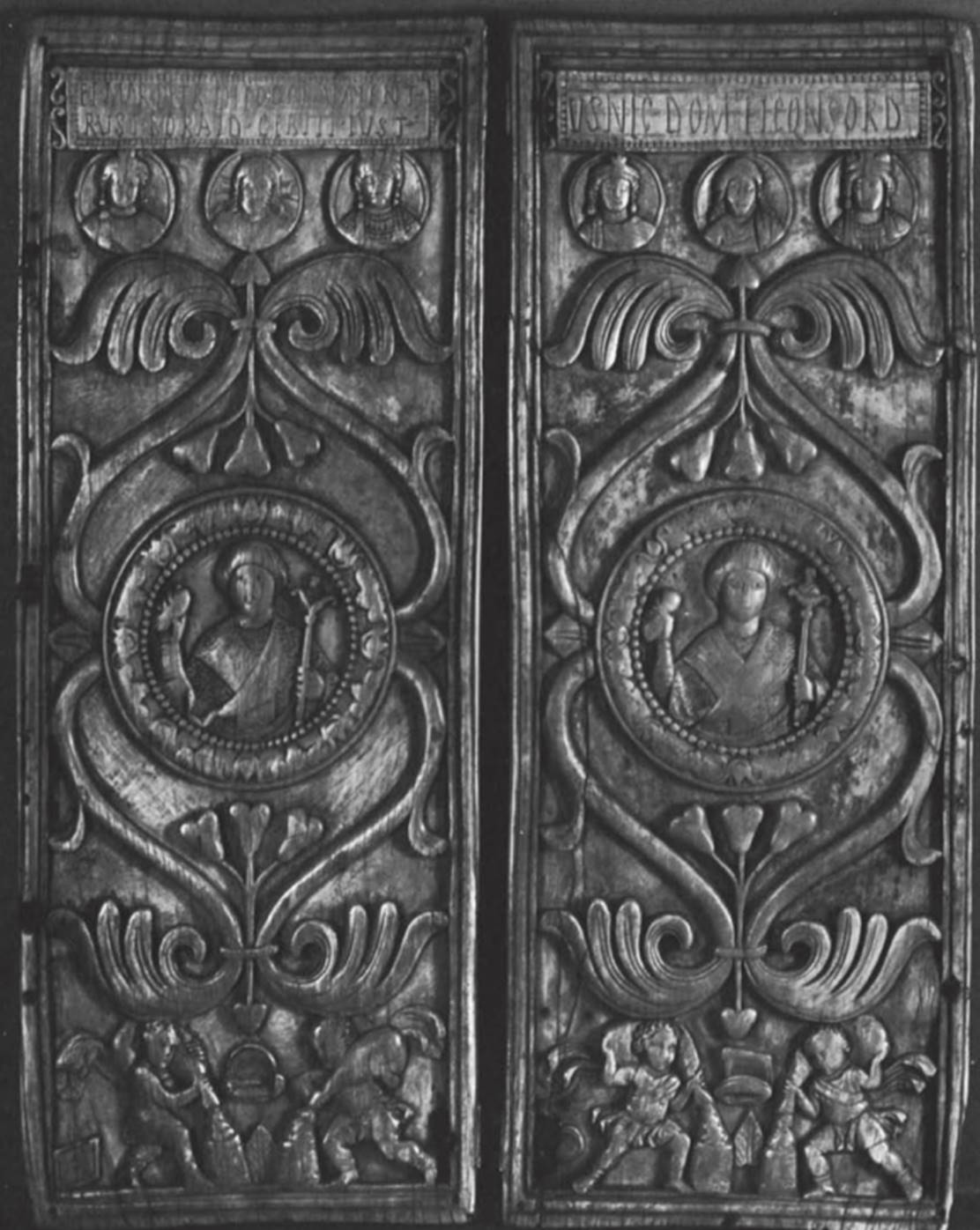Diptych of the consul Justin. Constantinople, 540. Ivory
The latest consular diptych known is that dated 540 and made for Justin, the eldest son of Ger- manus, the nephew of the emperor Justinian, who abolished the office the next year. Procopius remembers Justin as "an energetic fellow and [one] unusually keen in action" (De bello Gothico 7.32.14 [Dewing, 1924, p. 425]), who, with his father, thwarted a plot to assassinate the emperor. The portrait of the consul is now unfortunately so rubbed as to be of little help in determining his features, but, apart from the abrasion, the work has suffered little damage.

The ivory appears to combine the format of a diptych made for individuals of senatorial rank (e.g., no. 50) with that of one made for presentation to high governmental officials (e.g., no. 48). The bust-length portrait of Justin is framed in the central medallion; he holds a scepter in his left hand and the mappa in his right. The medallion is fixed in a framework of heavy vine ornament connecting it with the sparsio below and the portraits and inscription tablet above [front: FL(avius) MAR(cianuS ?) PETR(us) THEODOR(us) VALENT(inus) RVST(icius ?) BORAiD(es) GERM(anus) ivsT(inus); rear: v(ir) SNL(ustris [sic]) c(omes) DOM(esticorum) et cons(uI) ORD(inarius)].
Subtle variations in the poses of the consul, the slave boys below, and the portraits above distinguish the two leaves. These clipeate portraits show the emperor Justinian, left, and the empress Theodora, right, flanking a portrait of Christ. According to Grabar (1957), this is the earliest preserved example of a compositional type showing the emperor or imperial couple pictured with Christ. As Delbrueck (1929) pointed out, the portraits of Christ differ noticeably if not greatly. The portrait on the front has a cross monogram behind the head, that on the back does not. That on the front is dressed in a dalmatic, while that on the rear wears a tunic and pallium. The actual facial types also seem to differ slightly: the type on the rear leaf seems younger—his beard is shorter, the face narrower with the hair piled high on the crown of the head. The Christ on the front of the diptych has longer, flowing hair, a longer beard, and a fleshier, more mature face. Such different types may foreshadow the two radically divergent portrait types used for Christ in later official art.
Said to have come from the Goslar Cathedral; nineteenth century, Berlin, Kunstkammer; 1879, Berlin Antiquarium; Berlin, Kaiser-Friedrich Museum; 1952, Friihchristlich-Byzantinische Sammlung, Staatliche
Bibliography: Delbrueck, 1929, no. 34; Bovini and Otto- lenghi, 1956, no. 63 (1st ed.), no. 62 (2nd ed.); Grabar, 1957, pp. 24-26; Volbach, 1976, no. 33.
Date added: 2025-07-10; views: 169;
